DEFINITION OF TERMS:
- KEYSTONE means they are listed by National Wildlife Federation as core plants for a wildlife garden in my ecoregion (Ecoregion 8).
- NOT QUITE NATIVE means they are slightly out of range but adjacent to NYS as determined by GoBotany and NY Flora Atlas.
- Otherwise the plant is a NY-native or native to the area noted.
MIDWEST NATIVE: Mexican hat (Ratibida columnifera)
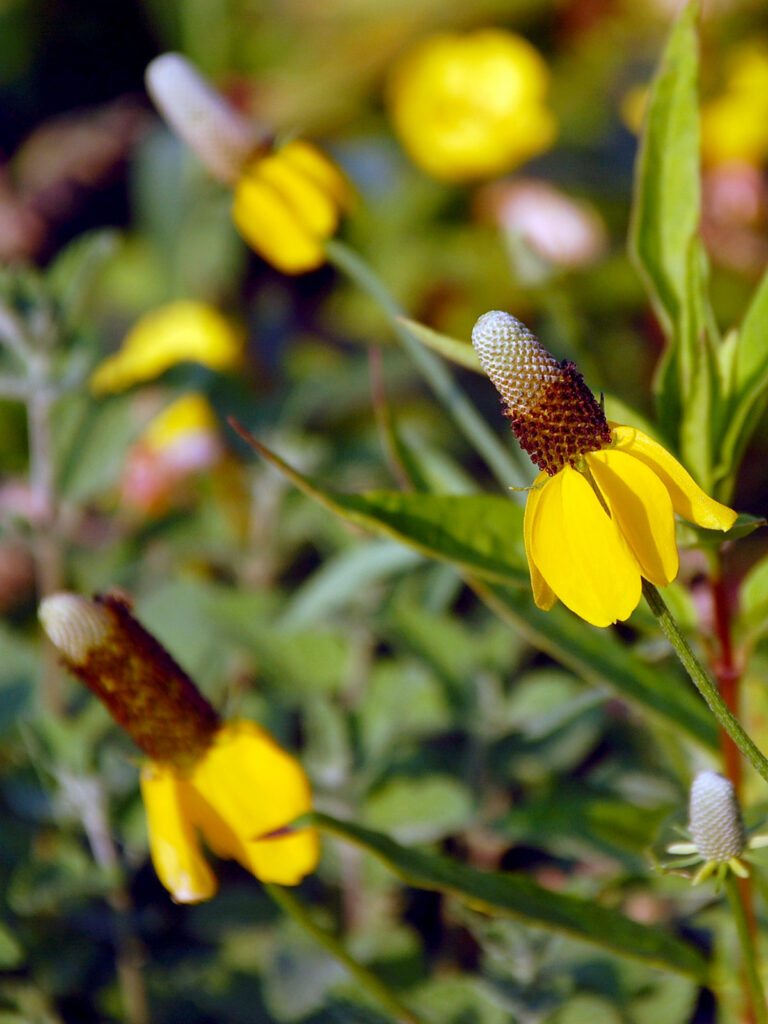
This is an intriguing flower, living up to its common name.
Unfortunately, it’s not native here in CNY. I imagine I got it at a native plant conference in Ohio before I knew about such niceties.
Wildlife: Nectar for bees, butterflies, insects; Seeds for birds
Deer resistance: High
** SPECIAL VALUE TO NATIVE BEES **
- Learn more:
- Wildflower Center: Mexican hat
NOT QUITE NATIVE: Grayhead coneflower (Ratibida pinnata)
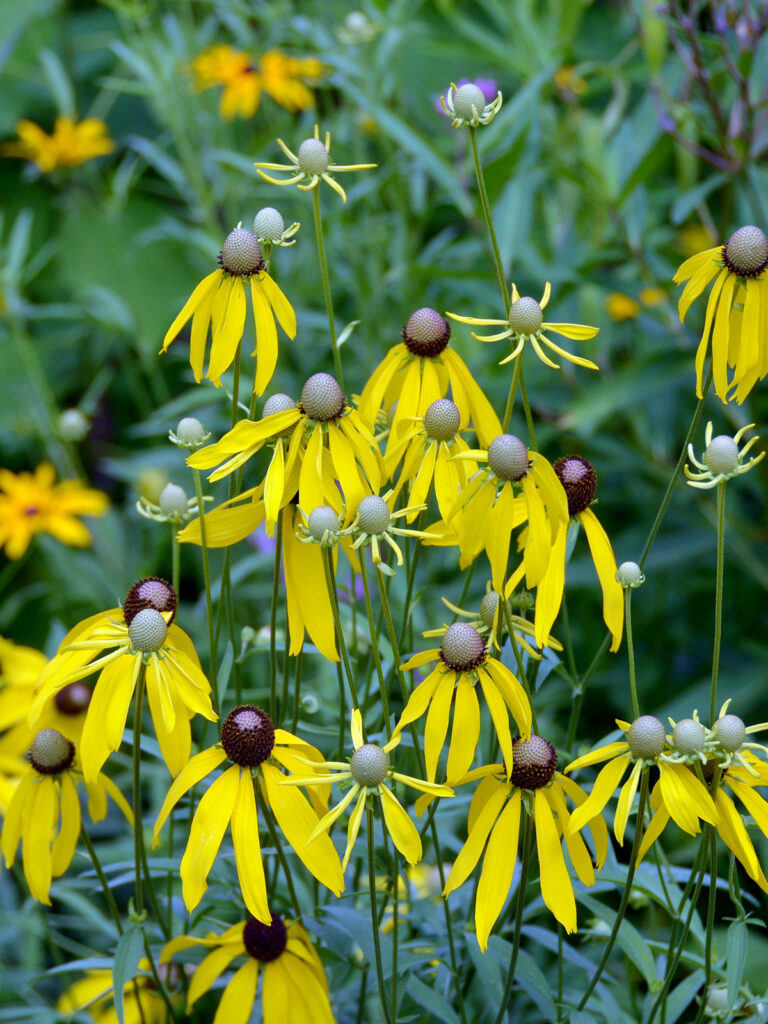
This flower is striking with its downward-curving petals. I like the finely cut foliage, too.
Wildlife: Birds, butterflies
** SPECIAL VALUE TO NATIVE BEES **
- Learn more:
- Wildflower Center: Grayhead coneflower
NOT QUITE NATIVE: Eastern coneflower (Rudbeckia fulgida ‘Goldsturm’)
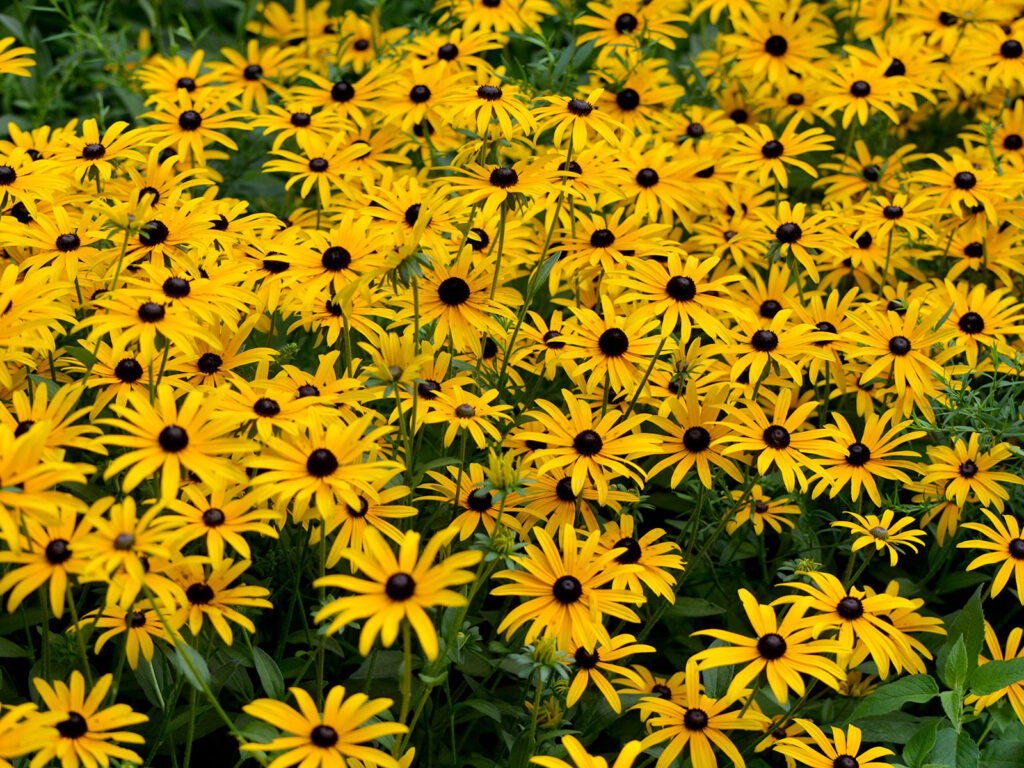
These volunteer more than generously; I pull them out all the time.
These have become so overused (in my opinion) that I don’t care to have very many of these, even though they’re a fine habitat plant otherwise. I like to grow things that fill habitat voids.
Wildlife: Birds
** SPECIAL VALUE TO NATIVE BEES **
- Learn more:
- Wildflower Center: Eastern coneflower
KEYSTONE: Cutleaf coneflower (Rudbeckia laciniata)
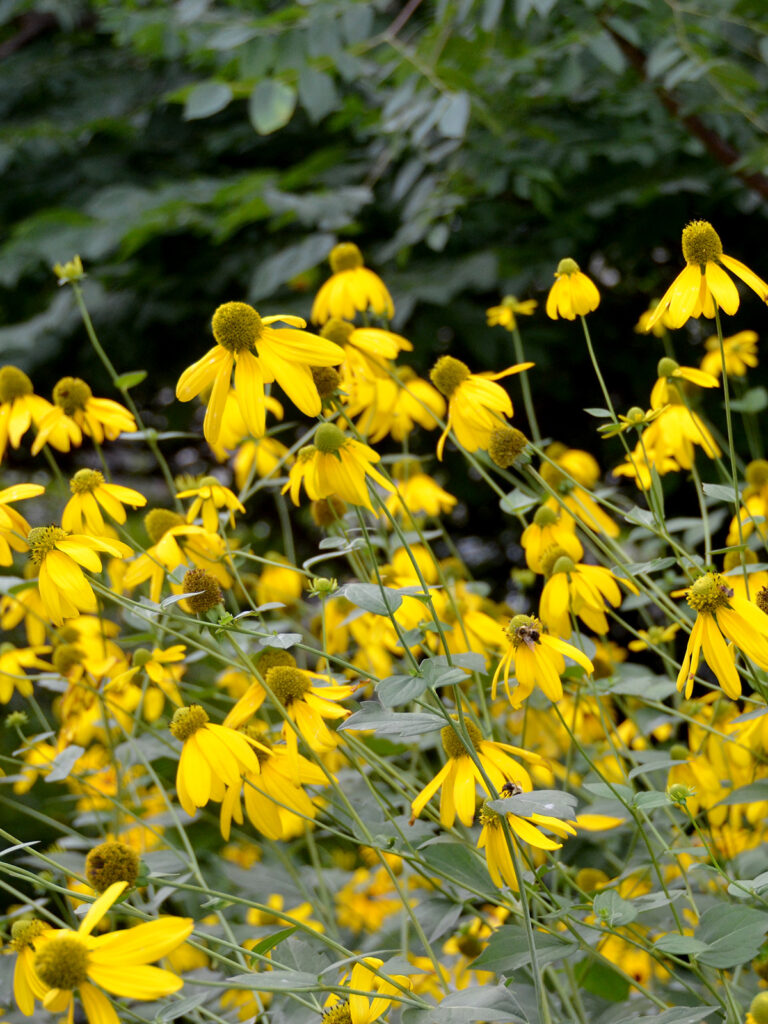
Cullina says it’s “a stately perennial with deeply cut leaves and drooping informal blooms.” It’s also known as “green coneflower” since the center of the flowers are greenish.
The goldfinches LOVE LOVE LOVE this plant!
It does get quite tall, so I’ve been experimenting with pruning them somewhat severely in mid-June.
Wildlife: Birds
** SPECIAL VALUE TO NATIVE BEES **
- Learn more:
- Wildflower Center: Cutleaf coneflower
MIDWEST NATIVE: Sweet coneflower (Rudbeckia subtomentosa)
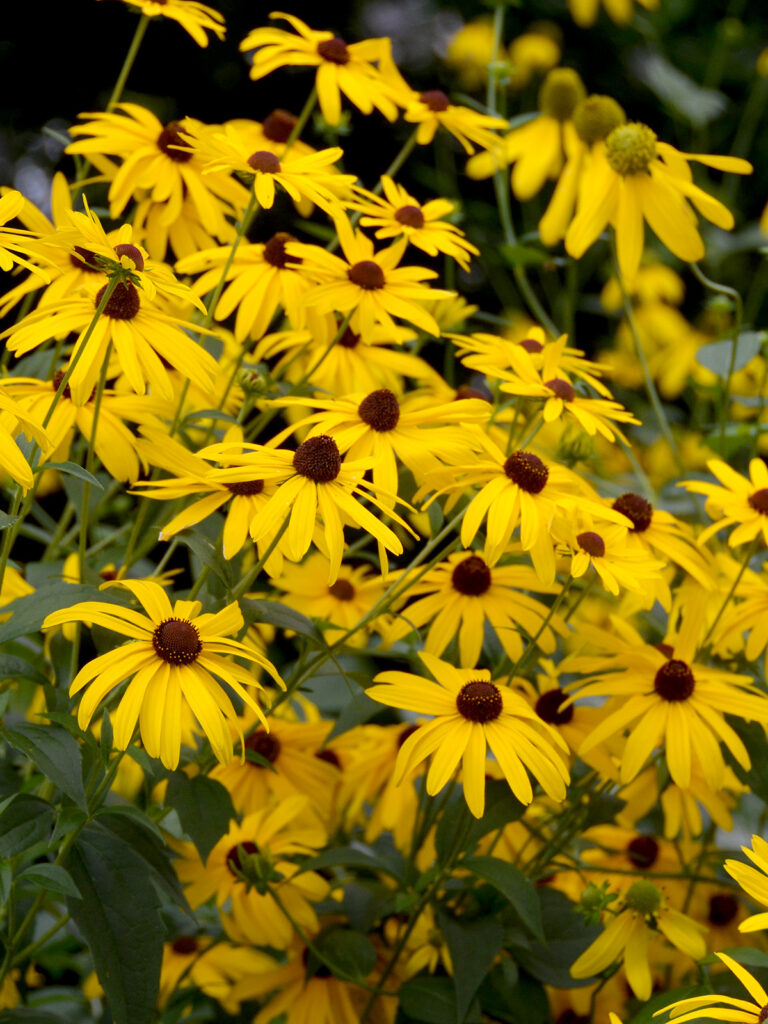
I like the flowers, but as Cullina says, it would be a good idea to cut it back in mid-June so it doesn’t get so tall and floppy.
If I can figure out which these are compared to the other Rudbeckias, I’ll try to get rid of these non-natives since I have equally useful natives.
** SPECIAL VALUE TO NATIVE BEES **
- Learn more:
- Wildflower Center: Sweet coneflower
KEYSTONE: Brown-eyed Susan (Rudbeckia triloba)
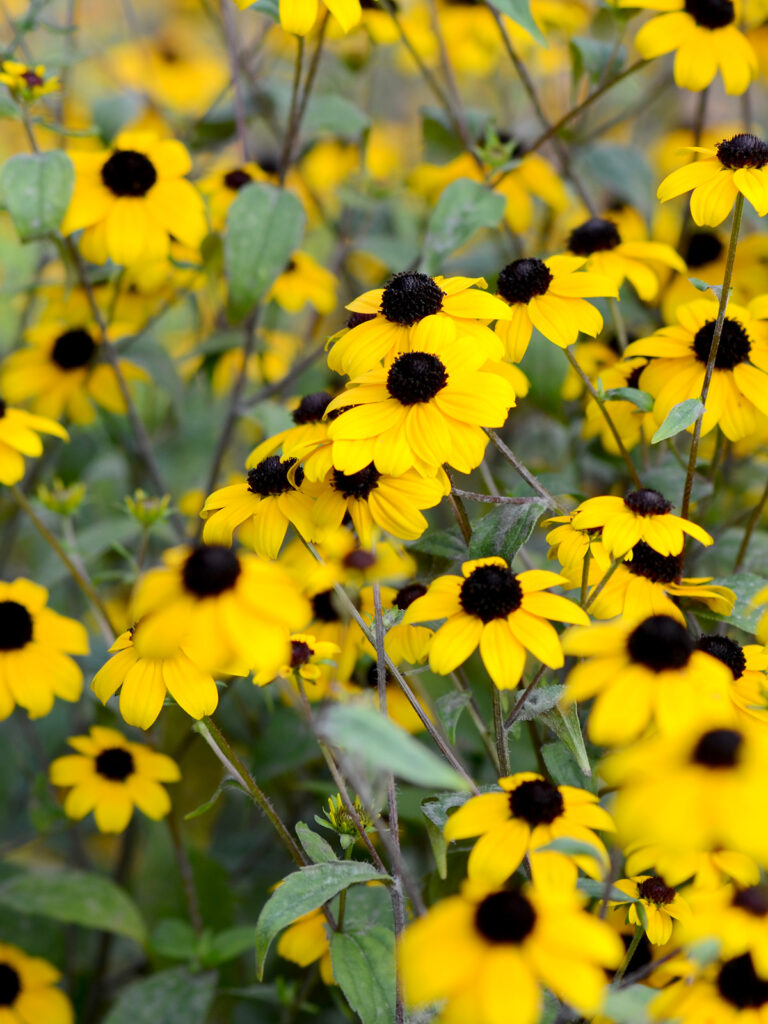
This is one of my favorite rudbeckias. I like the short little gold petals contrasted with the dark, dark, brown center.
Wildlife: Birds
- Learn more:
- Wildflower Center: Brown-eyed susan
NOT QUITE NATIVE: Wild petunia (Ruellia humilis)
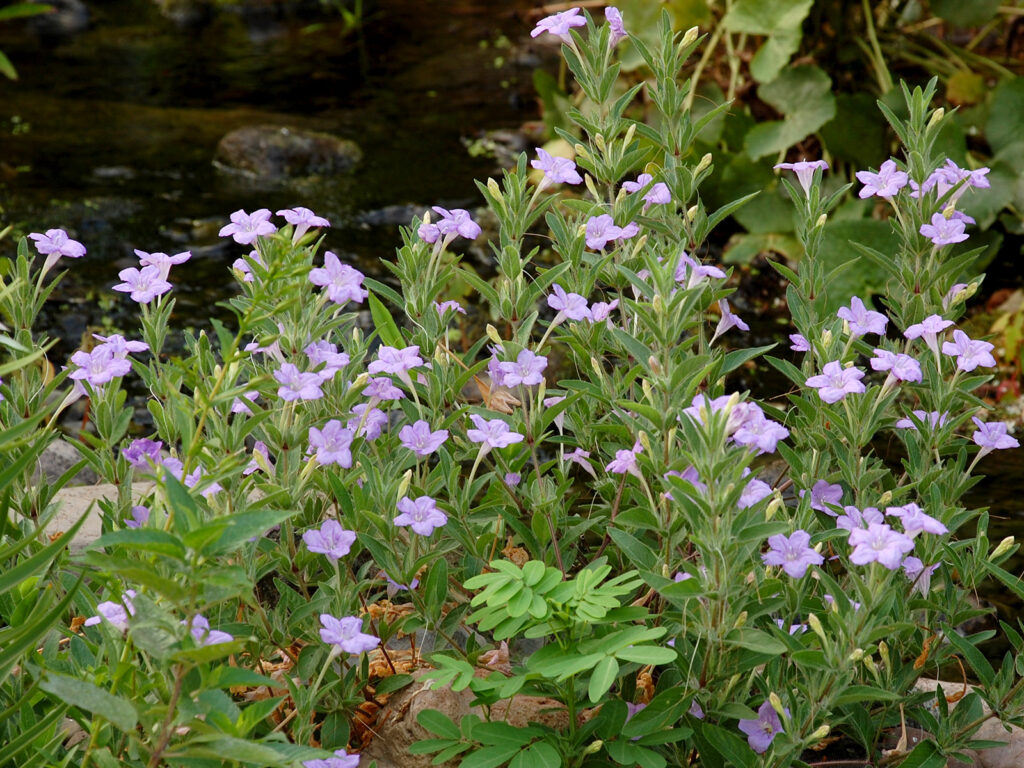
This is a charming little plant. The bluish purple flower blooms abundantly, and the plant volunteers generously.
Years ago, I wrote here that it volunteered “no more than I want.” Now (as of 2019) it definitely did seem like more than I wanted, and I pulled out quite a few. Now (2022) though I think I’ll compromise and leave some.
Wildlife: Butterflies
Larval host: Buckeye
- Learn more:
- Wildflower Center: Wild petunia
Bloodroot (Sanguinaria canadensis)
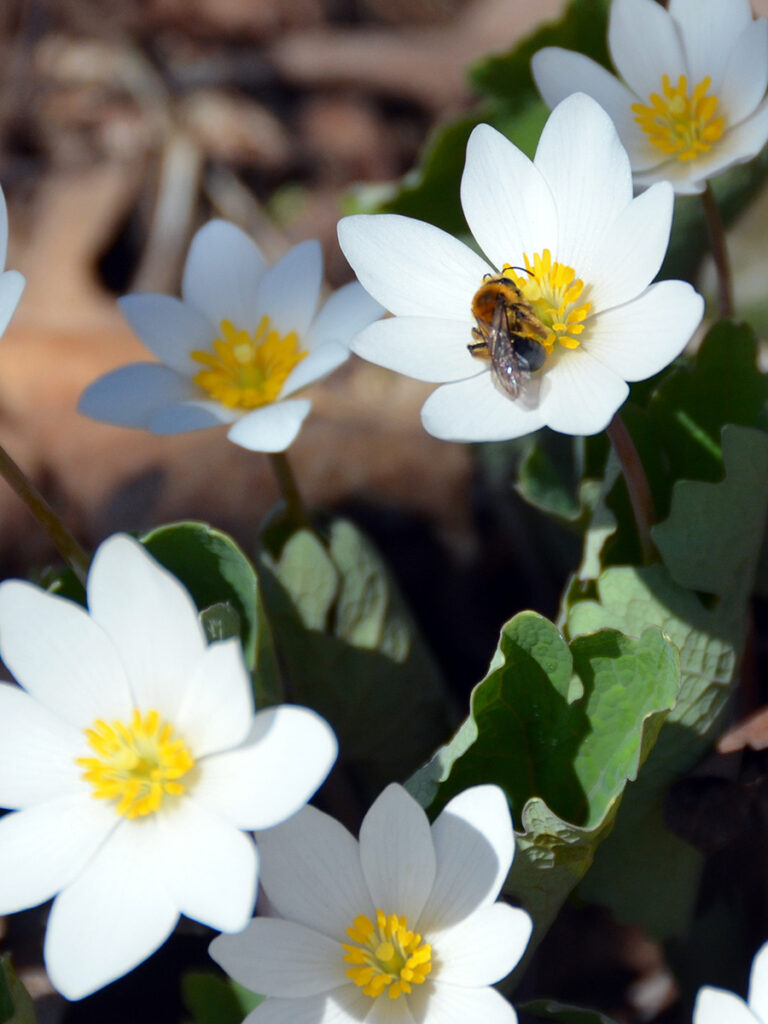
Bloodroot flowers are simple, elegant, and one of the many fleeting spring ephemerals. Years ago, I had been given a double-flowered cultivar but either some of them have since reverted to the single form or I may have bought some of the straight species.
The cultivar is beautiful, but I’ve grown to appreciate the single form for its simple beauty and especially because it provides nectar in spring when it’s so needed. What insect could get nectar and pollen from the double flowered plant?
I’m working to eradicate the cultivar.
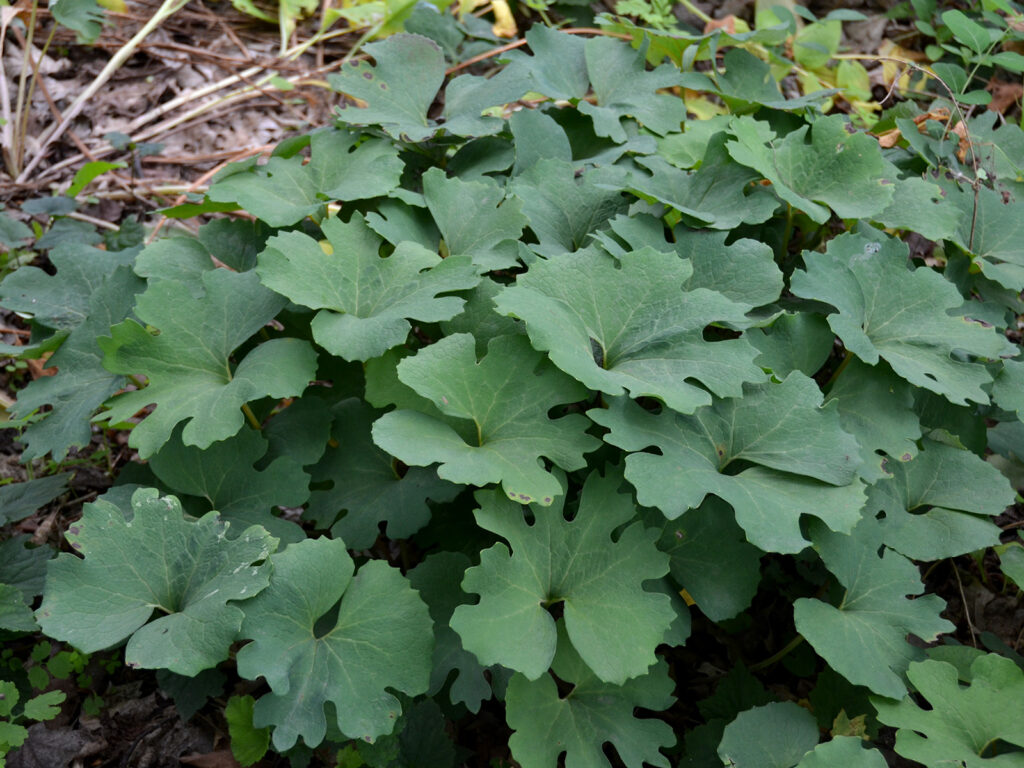
Even though the flowers are fleeting, the beautiful foliage stays around longer.
